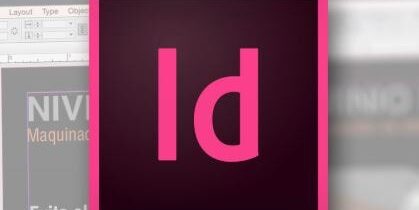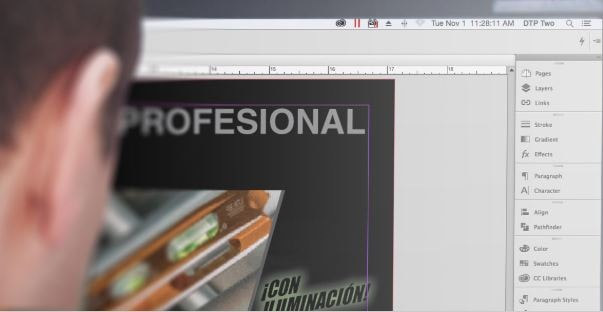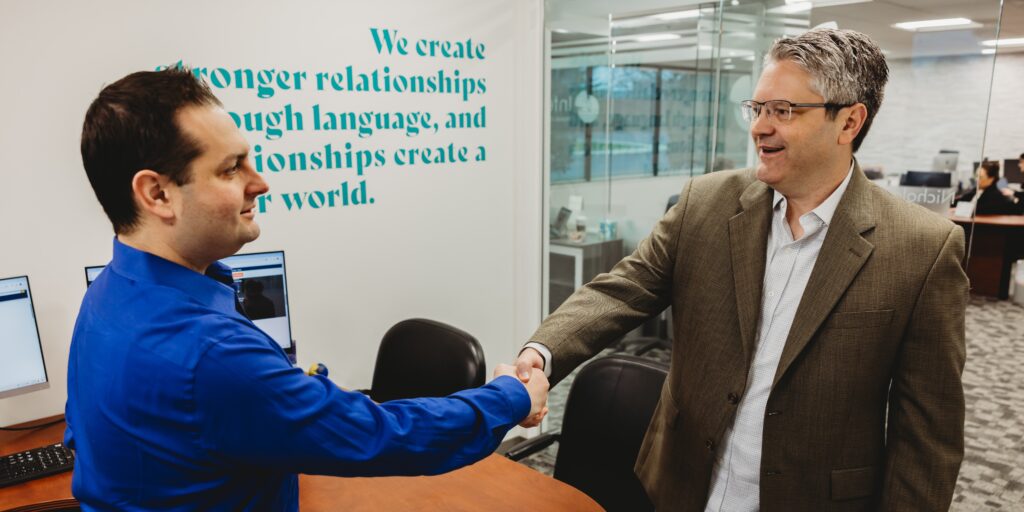
Multilingual Desktop Publishing (DTP) has played an important role in the workplace since its creation in the 1980s. Today, businesses and organizations use desktop publishing and graphic design for in-house training materials, marketing, and more. Adobe InDesign continues to be one of the most popular desktop publishing programs, with an estimated 12 million Adobe Creative Cloud customers in 2017. The challenge now is to take that desktop publishing to global audiences through InDesign translation. This process is an essential part of localizing the content of any company. By utilizing a seamless InDesign translation process, a native linguist and an in-house desktop publishing specialist can translate and format your native source files and preserve the intended content and layout. InDesign translation has special benefits of increased consistency and a streamlined process when it comes to brochures, catalogs, and other documentation that a business or organization needs to share with multilingual audiences.
Increased Consistency
Brochures are useful tools to pique the interest of audiences and help them learn more about a particular brand and message. In addition to using brochures as a means to attract potential customers, many businesses and organizations now offer catalogs or manuals as a means to display the array of available products or services. By combining text and images, both online catalogs and print versions are often the first stop made by potential customers interacting with a company for the first time. As companies and businesses grow their audiences globally, it is imperative to translate brochures, catalogs, and other desktop publishing documentation accurately and efficiently.

Using InDesign translation to make content more widely available is an effective way to increase consistency. Partnering with a translation company who offers quality desktop publishing is critical. This preserves the intent behind the original content and design, even if the paired languages are marked differently. Translating from English into other languages can increase or decrease line counts by more than 25%. By working with a company that has expertise in both language and desktop publishing, the language will be translated accurately while still incorporating white space and other design elements to the page layout. In the event that the end language is a right-to-left display, as is the case with Arabic or Hebrew, your translation partner can perform document reconstruction, modifying the layout and performing a right-alignment of the text. Additionally, InDesign translation also ensures that font selection best meets the needs of multilingual audiences. Desktop publishing specialists understand that certain fonts that may appeal to a reader in English will be ineffective or even unintelligible when translated into languages like Korean or Simplified Chinese. Combining expert translation with impeccable desktop publishing skills ensures that the translated brochures, catalogs, or other documentation still maintain a consistent and clear message.
Streamlined Process
Throughout the InDesign translation process, the team of skilled translation experts will work with each company to personalize the process based on specific needs. For instance, some documents would benefit from glossary development, during which a source and target language glossary are created. This multilingual glossary prioritizes quality and accuracy by incorporating specific terminology that will be most helpful to end users. Overall, this personalization helps streamline the complete InDesign translation process.
During the process, a specific document translation workflow is used. As a result, the project is streamlined in a way that emphasizes efficiency. The client simply specifies the target language, and then the translation company gets to work. Instead of moving back and forth between operating systems and file types, InDesign translation is performed using the same operating system and software version that was used to create the source files.
As the content is moved from its source to end language, native linguists will use various translation techniques to preserve the grammar and stylistics of the source language and culture. Additionally, translation memory is utilized to make the translation process more efficient in terms of time and cost. Then, desktop publishing specialists format the content, paying special attention to the principles of design, including contrast, alignment, repetition, and proximity. By handing off the translation work to a professional lnDesign translation team, companies can be certain that brochures, catalogs, and other documentation will be translated accurately using an efficient workflow.
Final Thoughts on InDesign Translation
If a picture is worth a thousand words, having a polished piece of graphic design available to multilingual audiences is priceless. While most companies can handle desktop publishing in English, it is in virtually every company’s best interest to offer that same content in multiple languages to accommodate multilingual employees and customers. Professional InDesign translation of brochures, catalogs, and other documentation brings increased consistency and a streamlined process. This translation will bring your company’s words and images to readers around the globe.
Category: Translation
Tags: DTP, InDesign, Indd, Indd Translation, Indesign Translation, Multilingual DTP
Service: Document Translation
Don't forget to share this post!
Stay Updated with Interpro
Subscribe to our newsletter for the latest updates and insights in translation and localization.








